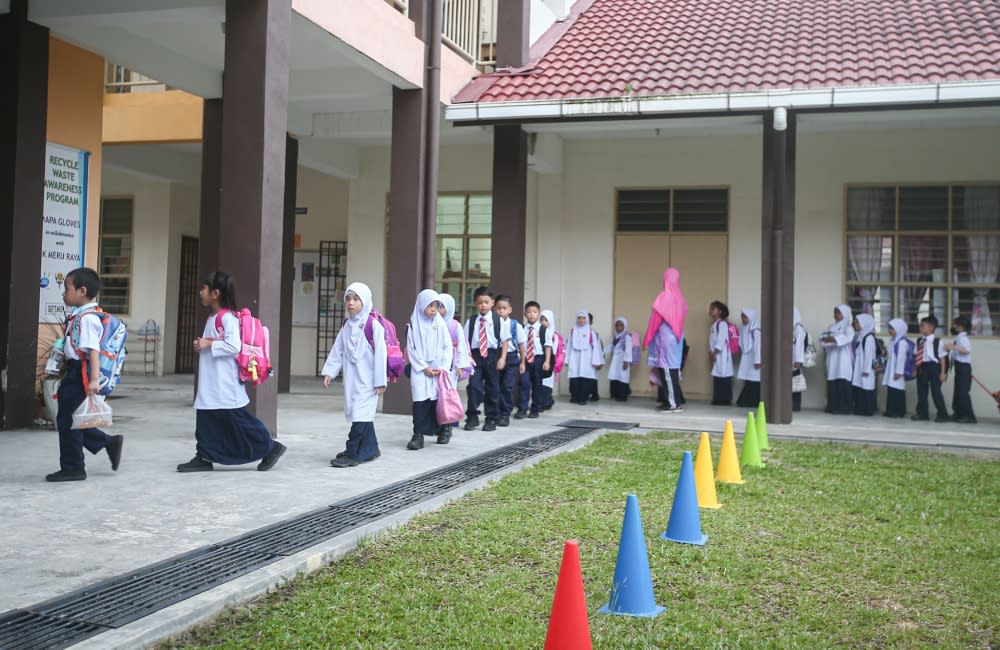 Malay Mail
Malay MailHow strength-based learning can transform the schooling experience

MARCH 27 — A new school year has started.
If the status quo persists, a small batch of learners will excel beyond all others while a majority will feel stressed out one way or another.
This is simply a sociological fact.
We, Asian parents and educators, will expect a flurry of top marks from our kids or wards, thereby piling unnecessary pressure on all but those who are strongly gifted academically.
At the end of the school year, most of the kids — despite pushing themselves — will feel like losers (because the very nature of the game restricts the number of winners).
But does it always have to be like this? Is there some way to approach schooling such that a majority of students enjoy their studies and excel at their respective strengths?
I think there is.
What if we encourage each individual student to ‘play’ their schooling according to their individual strengths?
To get at this, we first need to grasp the convexity-concavity binary.
Convexity is what you see when teenagers start playing Fortnite on Monday and by Thursday are almost experts.
It’s what happened when Magnus Carlsen first learnt how to play chess; within a few weeks he was beating his dad and sisters, in a few years he was thrashing grandmasters and even drawing with then world champion Garry Kasparov.
Convexity is how one might describe YB Anthony Loke’s progress as transport minister whereby almost everything he says is worth listening to and you really get the feeling he’s the man for the job.
You can also detect it in the most effective of your colleagues, whereby any given “unit” of effort yields disproportionately high value.
Give these folks a project and you just KNOW they’ll deliver quality within the given timeframe (or even faster).
There is something non-linear happening when individuals perform in a manner which fits convexity. With time, they inevitably grow stronger. Despite unforeseen circumstances, they adapt fast, creatively and resourcefully.
My son’s progress with his Rubik cube is nothing short of convex. From solving the 3x3 cube within a minute, he then managed to drop his time to 30 seconds and now he’s trying to breach the 10-second mark. (Me? I could try for 10 years but I wouldn’t be able to do even two sides.)
However, I noticed that his progress with Bahasa Melayu is anything but convex! He struggles. He tries hard, but can barely pass. He’s attended tuition before, but the teacher claims he’s slowing her down (!).
Such a situation we may be termed the opposite of convexity i.e. concavity.
Concavity is what you see when most elderly people are shown a new app (or, similarly, if younger folks are asked to study textbooks): Unusual difficulty and obstacles from the start, followed by slow and discouraging progress, ending with a baseline understanding or even aborting the use of the app entirely.
Concavity is the state of Malaysian traffic (or traffic in most Asean countries) in which solutions are few and far between and long-term progress to eliminate jams are impossible.
Concavity, alas, is also the case with a majority of Malaysian students when it comes to their studies. They are pushed to excel in as many subjects as possible, pressured to obtain higher and higher grades (at even those areas they suck at) and whatever they achieve it’ll never be enough.
The minority group who are naturally strong in academia have it well under control during their school years (i.e. they experience convexity) but most within this group then suffer concavity when they join the workforce.
Because — surprise, surprise — in the corporate world “memorising” textbooks and solving differentiation aren’t exactly treasured skills.
How do we give our students a learning experience characterised by convexity, instead of concavity?
Certainly not be getting them to “try harder” year after year. Trying harder and getting marginal or negligible results is the very definition of concavity.
Trying “smarter” is one alternative. We must teach our students how to learn. Life-hack their subjects, as they say nowadays.
Ultimately, students should take a strength-based approach to their studies. Get them to focus the bulk of their energies on those two to three subjects they are passionate about or have a knack for.
And the other subjects (like BM for my kid?), get them to meet the bare minimum requirements, and move on. Don’t waste time on subjects which stress you out unnecessarily, despite repeated effort.
In other words, encourage students to excel selectively. Don’t be kiasu and expect virtually every kid to be scholar material.
That’d be like Nicol David spending her time trying to improve her basketball skills. Not smart.
*This is the personal opinion of the columnist.


